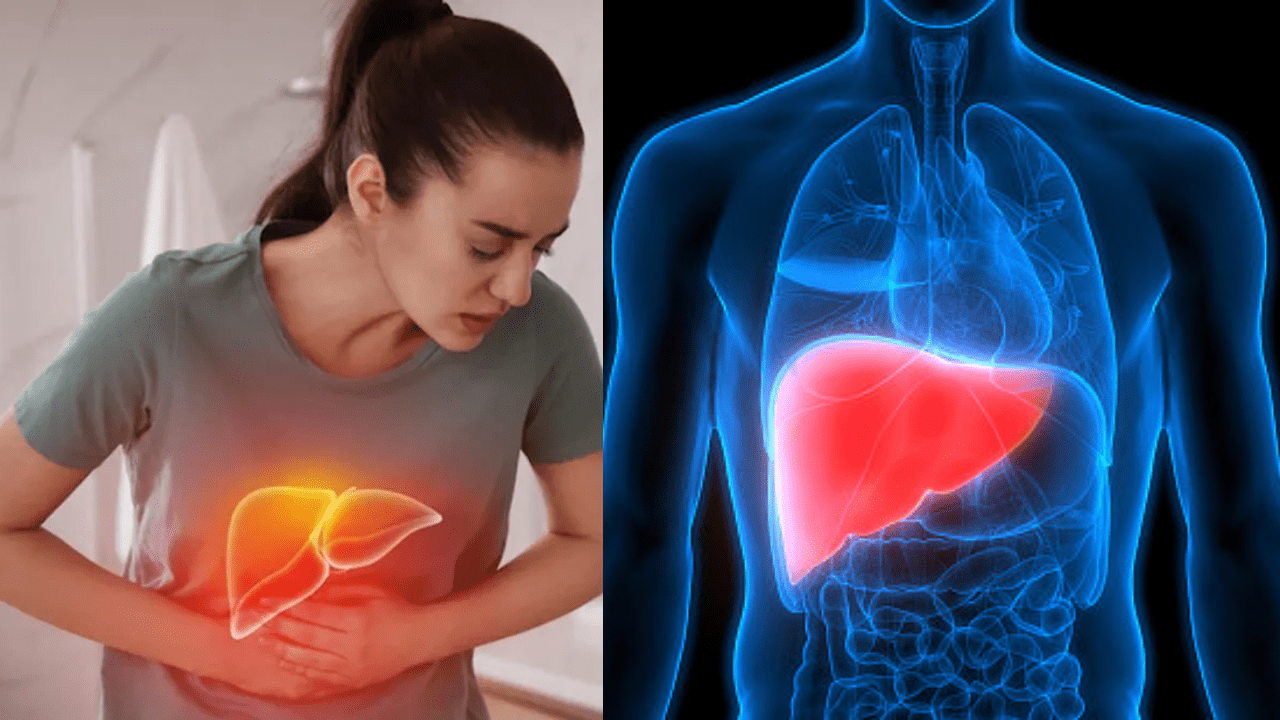Fatty Liver Exposed – Discover the Types, Triggers, and Powerful Remedies!

A ground-breaking study that was published in the journal Nature’s Gut and Liver found that children who are inactive for more than six awake hours a day had a significantly higher chance of developing severe fatty liver disease and liver cirrhosis by the time they are young adults.
The study, conducted by Mr. Agbaje, analyzed data from a long-term investigation of a large UK birth cohort. Participants underwent liver ultrasound scans at ages 17 and 24 to assess for fatty liver and liver scarring.
The findings are alarming: on average, children spend 6-hours a day being sedentary, with this figure rising to nine hours by young adulthood. The study revealed that for every additional half-hour of sedentary behavior beyond six hours per day, the odds of developing fatty liver disease before the age of 25 increased by 15%.
Furthermore, any increase in sedentary time above 6-hours resulted in a corresponding decrease in light-intensity physical activity. By young adulthood, these children engaged in three hours less daily light-intensity physical activity compared to their less sedentary peers.
These findings underscore the critical need to encourage more physical activity among children to mitigate the risks associated with prolonged sedentary behavior, particularly the development of serious liver conditions.
Fatty liver, a condition characterized by excessive fat accumulation in the liver cells, is becoming increasingly common worldwide. While it may sound alarming, understanding its types, causes, and remedies can empower you to take proactive steps towards liver health. Let’s dive into the fascinating world of fatty liver and explore how you can keep your liver happy and healthy.
What is Fatty Liver?
Fatty liver, or hepatic steatosis, occurs when fat makes up more than 5-10% of the liver’s weight. While a small amount of fat in the liver is normal, excessive fat can lead to liver inflammation, damage, and other serious health issues. The condition is often discovered incidentally during routine check-ups, as it may not present symptoms in its early stages.
Types of Fatty Liver
Fatty liver can be broadly classified into two main types: Alcoholic Fatty Liver Disease (AFLD) and Non-Alcoholic Fatty Liver Disease (NAFLD).
Alcoholic Fatty Liver Disease (AFLD)
AFLD is caused by excessive alcohol consumption. The liver processes alcohol and, in doing so, can produce harmful substances that damage liver cells. Over time, this can lead to fat buildup, inflammation (alcoholic hepatitis), and even liver scarring (cirrhosis).
Non-Alcoholic Fatty Liver Disease (NAFLD)
NAFLD, as the name suggests, occurs in people who drink little to no alcohol. It is the most common liver disorder globally and is often linked to obesity, diabetes, and metabolic syndrome. NAFLD can further be divided into:
Simple Fatty Liver (Steatosis): Where fat accumulates without causing significant inflammation or liver damage.
Non-Alcoholic Steatohepatitis (NASH): A more severe form where fat accumulation is accompanied by liver inflammation and damage, potentially leading to cirrhosis or liver cancer.

What are the Root Causes of Fatty Liver
Several factors contribute to the development of fatty liver, ranging from lifestyle choices to genetic predispositions.
Excessive Alcohol Consumption:
Alcohol is a major cause of AFLD. Heavy drinking over time overwhelms the liver’s ability to process alcohol efficiently, leading to fat accumulation.
Obesity:
Obesity or being overweight increases the risk of NAFLD significantly. The accumulation of fat in the liver can be caused by excess fat, particularly belly fat.
Insulin Resistance and Type 2 Diabetes:
Insulin resistance, common in type 2 diabetes, can cause fat to accumulate in the liver cells.
High Cholesterol and Triglycerides:
Elevated levels of fats in the blood can contribute to fat deposition in the liver.
Poor Diet:
Diets high in refined carbohydrates, sugary beverages, and saturated fats can promote liver fat accumulation.
Genetic Factors:
Genetic predisposition can also play a role in the development of fatty liver.
Rapid Weight Loss:
Paradoxically, losing weight too quickly can also lead to fatty liver as fat is mobilized and deposits in the liver.
Let’s Delve into some Potent Remedies for Fatty Liver
Addressing fatty liver involves lifestyle changes and, in some cases, medical interventions. Here are some effective strategies to manage and potentially reverse fatty liver.
Healthy Diet:
Consume a diet high in fruits, vegetables, whole grains, lean meats, and balance. Particularly advantageous is the Mediterranean diet, which is well-known for its anti-inflammatory and heart-healthy qualities.
Regular Exercise:
Take part in regular exercise. Try to get in no less than 150 minutes a week of moderate-to-intense activity, like brisk walking.
Weight Management:
Losing weight can significantly reduce liver fat. A gradual weight loss of 1-2 pounds per week is recommended to avoid potential complications.
Limit Alcohol Consumption:
Reducing or eliminating alcohol intake is crucial for managing AFLD and beneficial for overall liver health.
Control Diabetes and Cholesterol:
Managing blood sugar levels and lipid profiles through diet, exercise, and medication can help reduce liver fat.
Medications:
In some cases, doctors may prescribe medications to manage underlying conditions like diabetes or high cholesterol, which can indirectly benefit the liver.
Avoid Toxins:
Minimize exposure to environmental toxins and unnecessary medications that can strain the liver.
Regular Check-Ups:
Regular monitoring through blood tests and imaging can help track liver health and adjust treatments as needed.
Verdict
Fatty liver, though increasingly common, is manageable and often reversible with the right lifestyle modifications and medical care. Understanding the types, causes, and remedies empowers you to take proactive steps toward a healthier liver. By adopting a balanced diet, engaging in regular physical activity, and making mindful choices about alcohol and medication, you can keep your liver functioning optimally. Remember, small changes can lead to significant improvements in your overall health and well-being.
Also Read:

The Psychology of Love: Why Valentines Day Matters More Epic Than You Think
Discover the psychology of love and why Valentines Day is more important than you think. Learn how love impacts the brain, strengthens relationships, and boosts

Premier League Highlights: Arsenal Humiliate Man City 5-1, Spurs and Palace Secure Crucial Wins
Arsenal demolished Manchester City 5-1 in a statement premier league highlights win, reigniting their title hopes. Meanwhile, Crystal Palace stunned Man United 2-0, and Tottenham

How Budget 2025 Impacts the Indian Middle-Class: Major Tax Benefits and Glaring Omissions
Budget 2025 offers major tax relief to the middle class, including zero tax on incomes up to ₹12 lakh. However, it misses out on incentives

Degrees vs Employability: Why “Highly Qualified Degree Holders” Struggle to Find Jobs While “Less Qualified Individuals” Get Hired Faster!
Many highly qualified individuals struggle to secure jobs, while less qualified candidates get hired quickly. This Degrees vs Employability paradox is caused by employer preferences,

The Power of Mindset: Why Looking Poor Doesn’t Make You Poor, but Thinking Poor Does!
Discover why looking poor doesn’t define your wealth but thinking poor does. Learn the power of mindset and how a growth-oriented mindset can lead to

Overthinking: How It’s Damaging Today’s Youth – Causes and Cure in 2025
Understanding how overthinking is silently damaging today’s youth, from its causes rooted in societal pressure and social media to its long-term effects on mental health.
